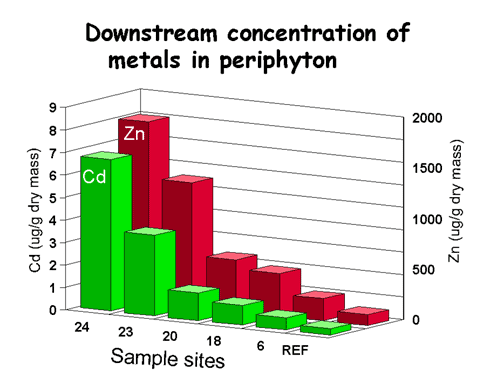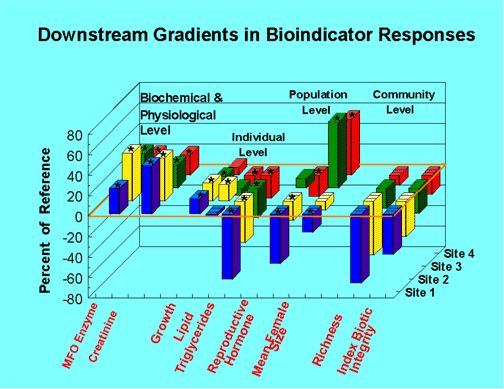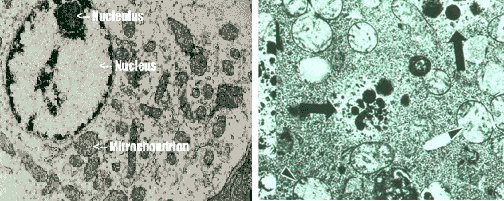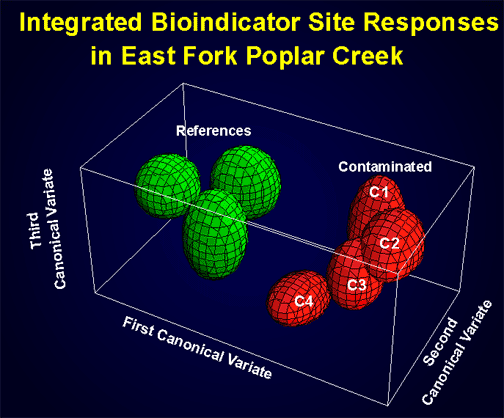

Streams impacted by mixed contaminants:
The East Fork Poplar Creek study.
Spatial (Site) Responses.

| Levels of contaminants in East Fork Poplar Creek and in tissues of redbreast sunfish (Lepomis auritus) decreased with distance below the industrial discharge. Site 1 is immediately downstream from the industrial discharge and site 4 is 18km downstream (Ref=reference site). |

| Levels of metals sequestered in periphyton also demonstrate a strong downstream gradient in metal loading in East Fork Poplar Creek. |

| The genetic diversity of the redbreast sunfish population increased at increased distance from the industrial discharge suggesting the mercury, a genotoxicant, was responsible for eliminating the more sensitive genotypes from the upstream populations. |

| Downstream gradients in bioindicator responses at several levels of biological organization. Histograms that project above the zero line indicate higher responses than that of the reference site. Stars above histogram represent significant differences from reference at P< 0.05. |

| Gill cells from reference fish (left) and gill cells from fish exposed to mercury (right) in East Fork Poplar Creek. Damage to organelles such as the nucleus and the mitochondria is evident in the mercury exposed fish. |

| Integrated bioindicator responses at the contaminated sites (red) and the reference sites (green) based on using 15-20 individual health response measurement at each site. The contaminated sites (C1 and C2) are most dissimilar to the reference sites wile the lower site, C4 is the most similar to the reference sites. If the integrated site responses indicated by the ellipsoids overlap, then the health of the fish at these sites are not significantly different. |
<< Home | Spatial (site) Responses | Temporal (recovery) Responses >>